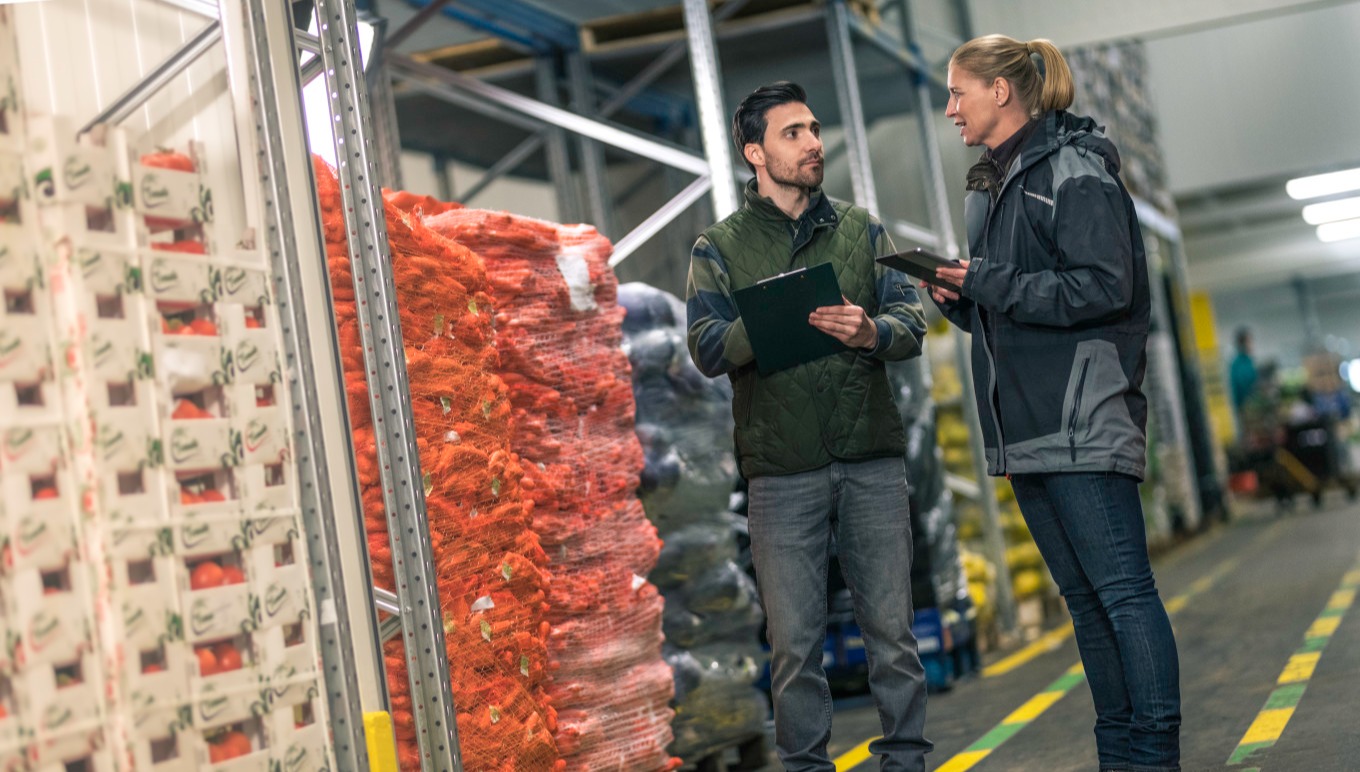Featured in this post
The 4 Biggest Food Supply Chain Issues and How Purpose-Built Software Can Help You Overcome
The 4 Biggest Food Supply Chain Issues and How Purpose-Built Software Can Help You Overcome

For food and beverage businesses, the supply chain is that most vital of pipelines through which all things flow, including raw materials and end products. It is the conduit for both the inbound ingredients that you need to manufacture your items as well as the finished goods that will be delivered to the foodservice and retail clients that provide your income.
That’s why supply chain disruptions can be a major concern for your organization. Unfortunately, that has been a more common occurrence of late—in fact, 73% of respondents participating in WTW's Supply Chain Risk Report indicated that losses related to the supply chain had been higher or much higher than expected over the last two years.
It’s not all bad news, though. By examining the root causes of today’s less-than-ideal circumstances, you can gain insight and better understand how they will impact your operations. And by implementing the right technological solutions, you have the potential to help your organization confront the challenges you face and come out on top.
To help prepare you for this task, we’ve pulled together this list of the four most significant food supply chain issues, with the important context of how they became prevalent and the effects they have on the businesses that deal with them. We also explain how industry-specific enterprise resource planning (ERP) and transportation management system (TMS) software can help your company navigate the current conditions with success.
1. Fluctuating Demand
The food and beverage industry has adapted to shifts in consumer buying patterns in the past few years, but overall the trajectory has remained upwards in terms of demand. All told, the global market value is on pace to grow at a compound annual growth rate (CAGR) of 6.2% from 2023 through 2027.
With this steady increase taking place and more changes in buying patterns inevitable, preparation and foresight will be key for effective supply chain management. The forecasting features of ERP solutions can create reliably accurate projections of your manufacturing material needs according to past sales data and emergent trends, including expected ingredient shortages and seasonal surges.
Operational flexibility should also be a priority given that demand fluctuations are more frequent today. That’s why the production planning functions of food ERP systems are so critical, as they help you balance supply with demand via visual comparisons of inventory with sales figures. Meanwhile, the shop floor logistics tools provide a comprehensive view of all warehouse activities, including inbound inventory and outbound orders, so that you can ensure you’re meeting expectations.
2. Labor Shortages
People are the driving force behind a healthy supply chain, and that’s why the ongoing labor shortage in the food and beverage space is of serious concern. In the U.S., approximately 100,000 industry jobs were unfilled as of July 2022—and it’s even worse in the UK, where there are roughly 500,000 vacancies out of 4.1 million industry roles.
Recognizing this reality, you can likely see the necessity of maximizing efficiency and making the most of the resources that you have in order to remain successful. The production scheduling features of ERP systems can be of great help on that front, allowing your business to leverage both machine and employee capacity to their fullest while taking advantage of as much of your lines’ uptime as possible.
Additionally, the production scenario functionalities of advanced solutions—like Aptean Food & Beverage ERP—facilitate the creation of backup plans in case staffing constraints make a shift in strategy the best choice to maintain productivity. Our industry-specific food erp technology is also built on the Microsoft Dynamics 365 Business Central platform, lending it a user-friendly and intuitive interface that lets workers easily accomplish their responsibilities in a timely fashion.
Lastly, the lack of truckers in both the U.S. and across Europe continues to hamper the logistics side of the industry and will likely require initiatives to increase retention and attract younger drivers to the profession for permanent resolution. Internally, though, you can implement a TMS with routing and scheduling functionalities now to maximize utilization of all your resources with automatic optimized route planning and dispatch smoothing.
of food and beverage businesses have experienced greater supply chain losses than expected over the past two years, according to WTW
3. Bidirectional Traceability
Public health is a hot topic, and consumers’ demands for brand transparency continue to increase. Those are no doubt two key reasons why the combined topics of food traceability and food safety ranked as the second-highest focus for risk mitigation by food and beverage business decision-makers in the survey portion of IDC’s 2022 Global Food and Beverage Industry Strategic Trends and Strategic Insights whitepaper, commissioned by Aptean.
For greater assurance in this matter, you can rely on the lot and sublot management functions of ERP solutions, the best of which enable full forward and backward tracking down to the individual item or ingredient level. Our software also includes features that facilitate working with commonly used standardized methods of labeling and classification, including serial shipping container codes (SSCCs) and license plates.
What’s more, a food ERP’s dedicated quality control tools prompt important checks on goods based on predefined criteria and can automatically place on hold any item that fails while scheduling follow-up actions for rectification of the issue. Aptean Food & Beverage ERP’s inspection status features let users manage the flow of products or entire lots to ensure that your company’s standards—as well as those of your customers—are being met.
4. Distribution Capacity Constraints
Between the aforementioned trucker shortage; periodic backups at ports and borders; rising freight costs; and the shipping container shortage that is only just now showing signs of abating, the distribution industry’s capacity has been severely constrained for more than two years at this point. Businesses and consumers alike still regularly experience shipping and delivery delays as a result, which is clearly a problem considering that this last step in the supply chain is crucial.
For food and beverage businesses that handle their own distribution and thus must overcome logistical challenges like these, a TMS that entails a routing and scheduling solution is the software you need. With route optimization algorithms that take into account both expected and emergency orders, as well as driver schedules and customer preferences, Aptean Routing & Scheduling fits this bill and can be relied upon to create the most efficient paths and optimized delivery timing.
Our system’s dispatch smoothing features also take into account truck capacity, picking resources and your facility’s parameters to create a realistic schedule for departures throughout the day. Meanwhile, Aptean Food & Beverage ERP has useful transport functionalities as well, including a tool that can facilitate planning by allowing for the comparison between the floor space you’ll need for staging versus what’s actually available.
Securing Your Business’s Future with Aptean Solutions
While not all of these food supply chain disruptions are necessarily permanent, it’s clear that unlocking greater resilience through the process of implementing purpose-built food and beverage business solutions can help future-proof your organization. After all, the term “digital transformation” is more than just an industry buzzword—this critical initiative can really boost your capability to handle the challenges of today, as well as those yet to emerge.
To succeed in your endeavor to modernize your operations, it’s a good idea to seek out a trusted partner that can help you along the way. Aptean can be that and more for your company, providing a complete suite of software that functions cohesively, backed by experts and support staff who care and are committed to a mutually beneficial relationship with every customer.
We also offer assistance during system deployment, including help with sketching out your roadmap to rollout and best practice advice learned from decades of collective food and beverage industry experience. And we encourage you to consider the option of a flexible cloud setup on the Software as a Service (SaaS) model for our food and beverage ERP that promote greater scalability, enhanced data protection, stronger cybersecurity and improved accessibility.
Now, if you’re ready to learn more, explore Aptean Food & Beverage ERP and Aptean Routing & Scheduling Paragon Edition and how they can help your business overcome food supply chain issues in greater detail for yourself. You can also check out our post on improving supply chain resilience with a cloud-based food and beverage ERP.
Aptean Global Food and Beverage Outlook
In this paper, we’re going to discuss how food manufacturers, producers and distributors can prepare for the 6 trends that will influence the food industry in 2023.



 Jack Payne | Vice President, Product Management & Solutions Consulting
Jack Payne | Vice President, Product Management & Solutions Consulting